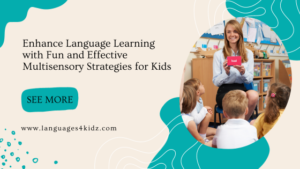Global trends in foreign language around the world.

In the last decade there has been an enormous increase and discussion around the new findings that give a lot of information about the importance of starting early when it comes to helping children acquire a foreign language.
The benefits of a bilingual or multilingual education are well documented and now we are more aware that it helps children gain cross cultural understanding and global awareness; it enhances academic progress in other subjects; it narrows achievement gaps; it benefits higher order, problem solving, abstract and creative thinking; it enriches and enhances cognitive, skills, and emotional development; it enhances children’s sense of achievement; it helps children score higher on standardized tests;it improves their chances of college acceptance, achievement and attainment; it enhances career opportunities; and it benefits understanding and security in community and society.
Parents are responding to these new findings and know that one or more languages besides their children’s mother tongue will provide them with access to better opportunities around the world.
It is a fact that a common thing these days is the desire to help children become proficient in a language other than their native tongue.
As each economy around the world becomes increasingly international, the need and demand for foreign languages continues to grow.
According to information presented by EUROSTAT, UNESCO Institute for Statistics in almost all European countries, compulsory learning of a foreign language now begins in primary education. In some cases, there is even an earlier start, as it is the case in Spain where children learn a foreign language from the age of 3 as well as in the German-speaking community in Belgium.
Despite the rise of non-Western nations in today’s global economy, English is still the language most commonly used as the lingua franca of business, science, research, and politics and it is the most widely taught language in primary education according to these statistics. But for native English speakers, what we see is a tremendous increase in the teaching of Spanish. According to the Pew Research Spanish has become the most commonly foreign language spoken in the US with over 37.6 million people speaking it at home. Today Spanish has become the 2nd most spoken language in the world, after Mandarin Chinese, and is an official language in 21 countries. Some have even argued that it may become the international lingua franca. Interest in Spanish is also mounting in Asia – specifically China, Hong Kong, Japan, and India – due to the growing importance of the language in global economic markets.
Meanwhile, there is also a global interest in the Chinese language given that it has the most speakers in the world, and the fact that China has become the world’s largest exporter and now the world’s second largest economy after the United States.
As one can see, the teaching of foreign languages to very young learners has acquired a significant importance all over the world. It is a need that brings new and interesting business opportunities. There is a greater demand of appropriate materials for teaching these or any other language to young children. There is an increased demand of early language learning centers and there is a great need for the training of language teachers that can deliver the new language materials in an appropriate and successful way.







